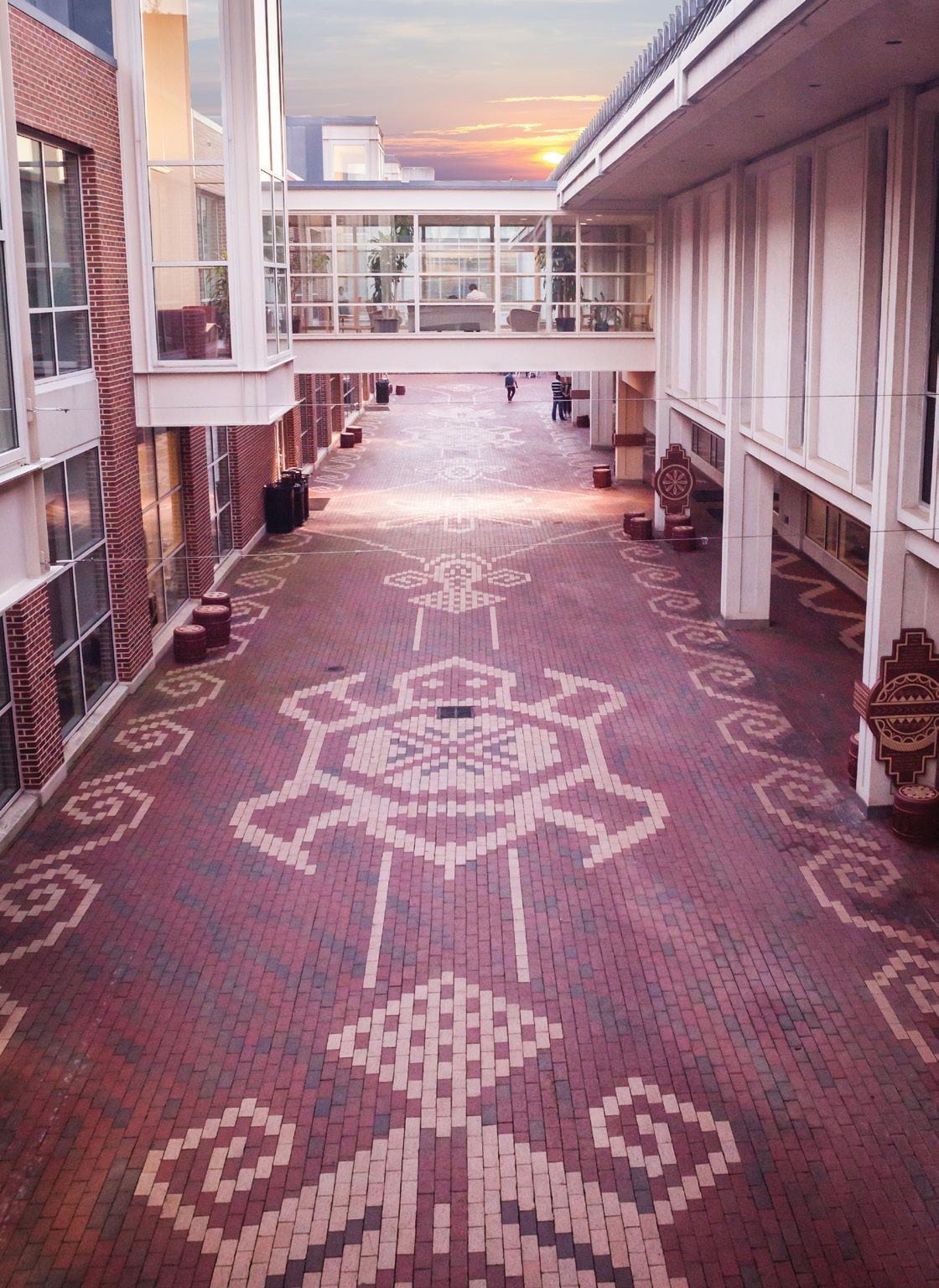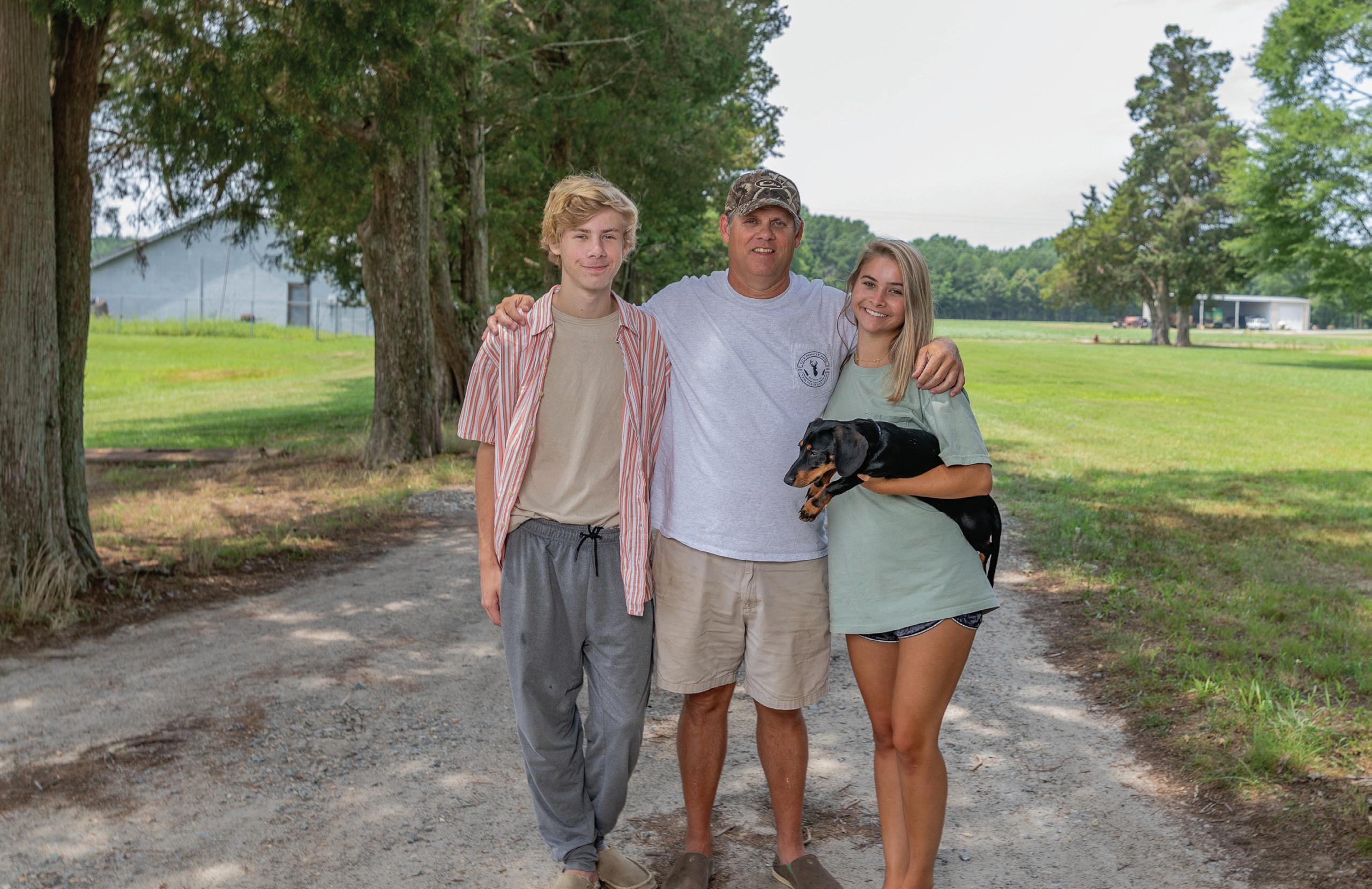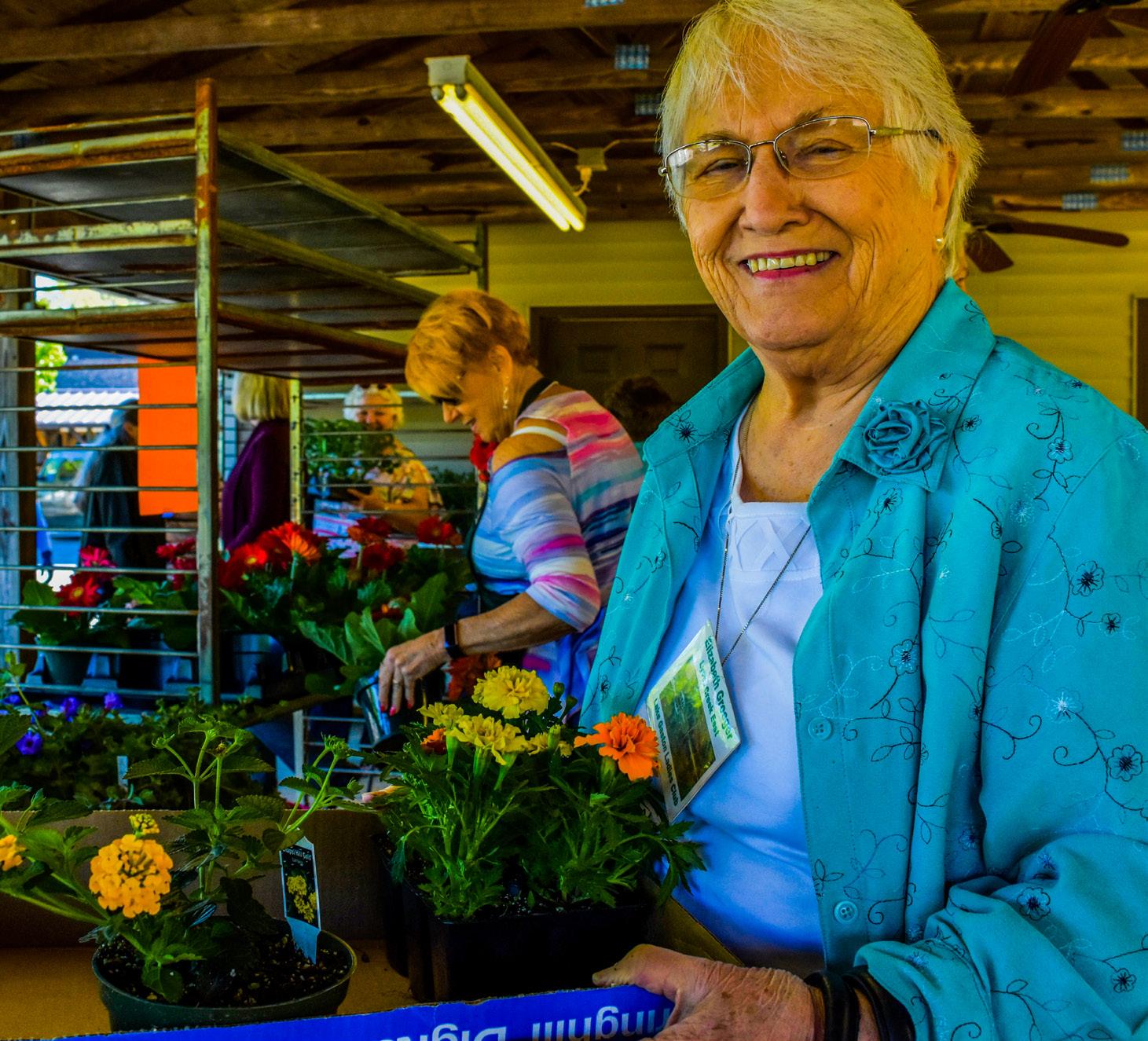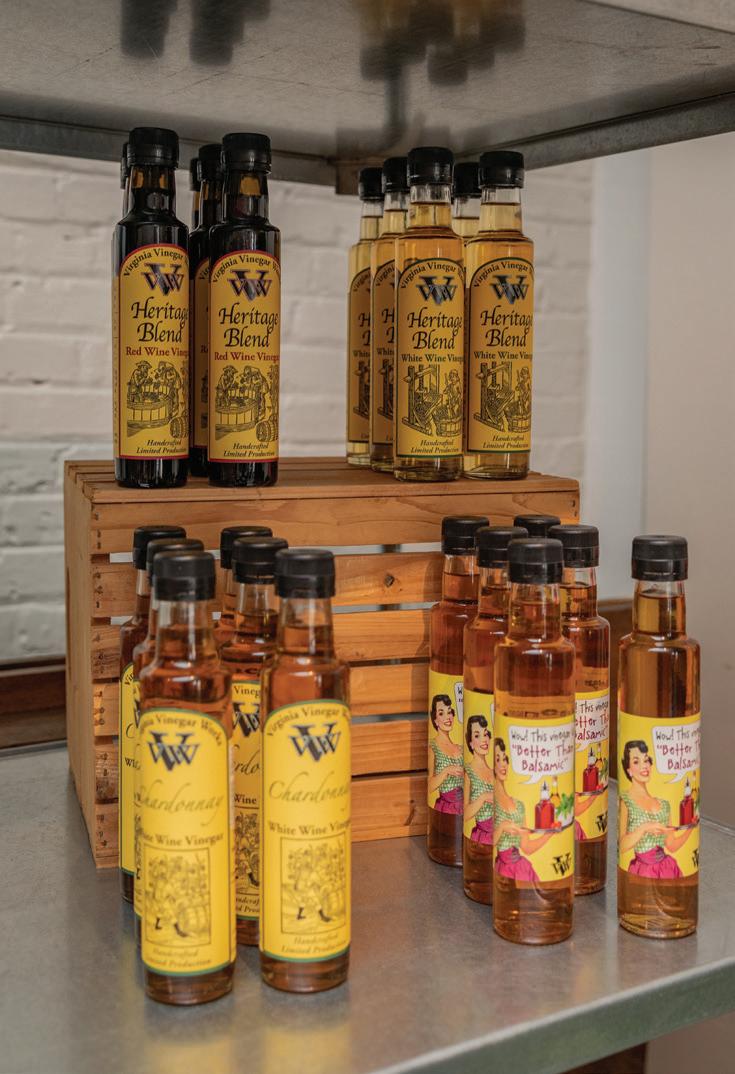
7 minute read
Blessings from the Earth
A local artist with an enormous spirit spreads her gift of creativity and stories.
More than 20 years ago I met Senora Lynch at the Haliwa Saponi powwow standing at a table with her pottery. Made from the red earth and painted with white etchings, her work was remarkable. I couldn’t decipher their meanings, but the symbols were familiar to me - dogwood flower, corn, tobacco and various animals. I stopped and examined each unique piece and though each seemed to hold its own story I was ignorant and could only guess until the master potter revealed her secret. A small woman, Senora was even more remarkable than her work and no one could have guessed that such a great deal of talent could be held in such a small vessel. She was real and made you feel as though you should hold on to every word she uttered. Standing in the meadows that day peering up through the pines, watching the dancers, and listening to the drums was a blessed experience.At the time, Senora's work 25 had already been featured in numerous exhibits. Later she would be featured at the National Museum of the American Indian, the National Women’s Museum of Arts and the permanent collection in the Smithsonian’s National Museum of the American Indian in Washington, DC, The NC Museum of History in Raleigh, Wesleyan College's Mims Gallery, Hanging Rock State Park in Danbury and the Piscataway Indian Museum in Brandywine, MD. She recently joked that you might never expect anything like this from small town Hollister, NC. Senora said that for as long as she remembers she loved to play in the mud, recalling that one of her first memories was of broken shards of pottery in the workshop of her grandfather, teacher and friend James Mills. Mills told her that those shards were the history of her people. It was from that pivotal moment that Senora began the journey of making a history of her own. “I think somehow that stayed inside me,” Senora confided. She talked about how her grandfather taught her about the simple things in life and how they relate to life in the moment. Things like a corn cob or dirt dauber’s nest took on a greater significance than childhood curiosities. “I could see the different textures and patterns and it stayed with me,” she said. “The spirit of clay has always inspired me.” Senora calls her pottery 'Living Traditions'. “Working in clay takes me back to my childhood days of playing in the mud as a free spirit,” she relayed.
Advertisement
It wasn’t until Senora was 14, that the urge to create developed while assisting tribal elders with a pottery class. Later, she met a tribal potter that taught her the fine art of “hand coiling.” In this technique red clay is rolled out by hand into long tubes, coiled into the desired shape, then smoothed and polished with expert hands and a stone. White clay is added atop the red for a striking embellishment. She said that she weaves a tale through the embellishments while imagining that the new owner receives a blessing from it. She said most of her pieces are inspired by nature and its connection with the spiritual elements. Creatures like turtles, hawks, owls, bear as well as tobacco, the dogwood flower and corn enliven each piece. One story, tells of the bear who comes to a field. He walks through the corn, destroying the stalk but trods its seed into the ground so that there is a new crop. She said that the lesson is that while there may be destruction, even that brings new life. Turtles, according to Senora, represent a long life, heart, Mother Earth and fertility. “The turtle is very special,” she said, noting that another of her favorites, the owl, represents wisdom and is also the bearer of messages. Corn is considered the staff of life while tobacco is the spirit of life. Both of these plants are sacred to the tribe. “The creator sends me ideas,” the master potter admitted freely. “I build the pottery in my dreams but I always wake up with a different interpretation from what I saw in the dream.” Senora has a deep rooted history in the area as a member of the Haliwa-Saponi tribe and while her people lost many of their stories they did not lose their spirit. Over the past 50 years the Haliwa Saponi have worked to build a future that incorporates their traditions, language and art as well as a great effort to educate the non-indigenous about the culture of the Haliwa Saponi people, a task Senora has taken upon herself at great length. Listed in the NC Artist Directory, Senora is in high demand and uses the opportunity to help overcome stereotypes and provide the basis of that education. Whether she’s at an elementary school, high school or university, Senora uses art to teach the history and culture of her people and other North Carolina tribes. She said it’s one of her favorite things. “When we first started everyone was afraid to talk and ask questions. Now the kids are raising their hands. Yes we are the original people and it’s okay to talk about culture as long as we do it respectfully. It’s cool to be able to connect with them through the art. It’s changing their minds from a ‘cowboys and Indians’ mentality. I think it’s made a big difference.” Senora said she enjoys demonstrating her pottery techniques as well. “I tell the kids that clay is magical,” she said. “We take the mud from the earth and if we mess up it’s okay because we can always start over.” Of all her exhibits, Senora said that by far her favorite is the installment at the walkway at the Frank Porter Student Union of the UNC Chapel Hill campus called The Gift. According to Commemorative Landscapes of North Carolina, the installation is named The Gift because Senora believes everyone has something inside to give, something they are meant to do and meant to be. Sharing the heritage of her people is her gift to us all.
In 2004, the artist laid a mosaic of colored bricks arranged to form Native American symbols - turtles, eagle feathers, ears of corn, the earth and water between the two buildings. These symbols are explained on a plaque near the installation which forms a walkway between the two student union buildings. The monument measures roughly 240 feet long by 40 feet wide. In 2015, she added more artwork to draw attention to the first installation. Made from building materials colored to match Senora’s pottery, six plaques with cream colored text explain the meanings behind the iconic symbolism and wrap around the building columns while 26 burnt orange concrete seats resembling drums and pottery provide a place to rest and enjoy the sight. Senora spoke proudly when she shared that students are now required to study the meaning of The Gift as part of their art curriculum. “It gets bigger and bigger,” she said, then laughed “In the beginning I was in disbelief that they even called me. I thought someone was playing with me.” In 2007, Senora was the 27 youngest person to receive the NC Folk Heritage Award for promoting and preserving the culture of the Haliwa-Saponi people and was the subject of the book, The Contemporary Southeastern Pottery of Haliwa Saponi Artist, Senora Lynch by Christopher Everette. She is also featured in many private collections. Her activism through art has continued to receive recognition and recently she received the Haliwa-Saponi Educator of the year Award and the American Indian Hero Award from Halifax Community College as well as Best of Show at the United Tribes of NC Indian Conference in Raleigh, NC. The artist said that each piece is made with joy and love. “I am blessed to use Mother Earth, to create each piece of art. Clay is amazing and magical. I am blessed to get my hands dirty and bring forth my visions and dreams.”
Senora will have exhibits Aug. 17th -Sept. 19th at the Southeast Community College in Whiteville NC, at the NC State Fair October 15th -25th in the Village of Yesteryear and at the American Indian Celebration Museum of History in Dec. For more information or to purchase some of Senora's work visit aim-nc.com

The Gift provides a full visual experience to students at UNC Chapel Hill.
Photo by Jennifer Hollar Photography.










